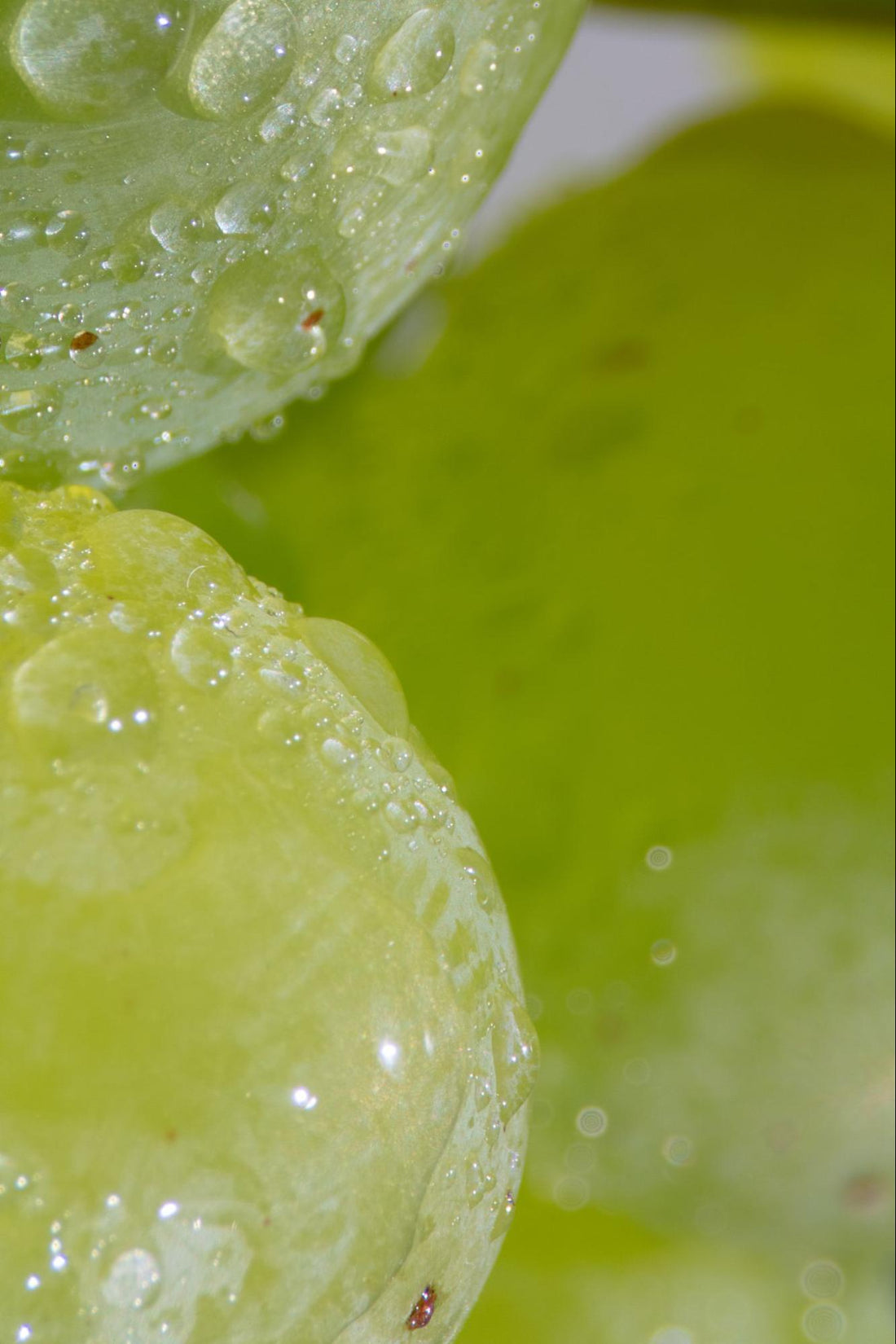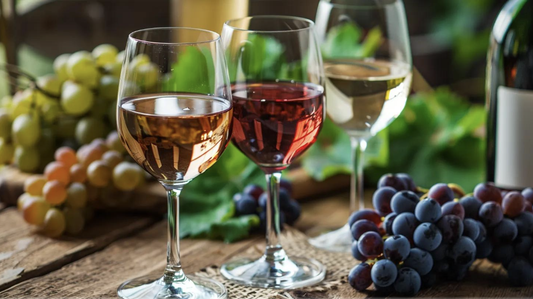
How to Make Wine from Grapes: Your Guide to At-Home Winemaking
McKenzie HaganWhether you fancy yourself a DIY savant who's intrigued by the idea of homemade wine or an oenophile who simply wants to learn more about the art of winemaking, this guide on how to make wine from grapes has your name written all over it.
Making wine is one of those time-honored traditions that has been around for almost as long as humankind has needed a drink. But even though wine has been a common pleasure throughout the centuries and across all cultures, there's still a bit of mystery surrounding the details of how to make it.
Well, we'd like to change that. Join us as we take you on a journey that will decode the evolution from grape to glass and give you an even greater appreciation for this magical metamorphosis.
The Historical Backdrop: When and Where Did Winemaking Begin?
Before we delve into the details of how to make wine from grapes, it'll help to get some context about its history. While France and Italy are the countries most synonymous with winemaking, archaeological records suggest that wine was first produced in China around 7000 B.C., with the countries of Armenia and Georgia following suit not too long after.
The art of winemaking also spread to ancient Egypt, where it was a significant part of religious ceremonies. The Egyptians refined winemaking, adding methods and techniques that are still used today. Their fascination with wine was such that they even included wine jars in the tombs of pharaohs, ensuring they had plenty to enjoy in the afterlife.
Pro tip: For the full story on the nuances between "Ancient World" wines, "Old World" wines, and "New World" wines, be sure to check out our guide to the curious and captivating history of wine.
The Process: How Do Winemakers Make Wine From Grapes?

Whether you're talking about red grapes to produce a luscious Cabernet Sauvignon or white grapes to make an oaky Chardonnay, there are several processes essential for winemaking.
Here's a quick rundown of how to make wine from grapes:
-
Harvesting: As with any other ripe fruit, harvesting is the process of picking and gathering wine grapes. Once the grapes are plucked from the vineyard — either by hand or by machine — destemming takes place.
Many novice winemakers may wonder about the timing of the harvest. It's crucial to note that the timing of the grape harvest significantly affects the resulting wine's taste and quality. Grapes should ideally be harvested when they've reached their peak ripeness, which usually means a balance of sweetness (from sugar) and acidity. Weather conditions, grape variety, and the desired wine style can all influence the optimal harvest time.
- Pressing: Also called crushing, this is the step when the grapes are crushed to extract the grape juice that'll later become wine. White wine grapes are pressed right away to avoid prolonged contact with the grape skins (hence the light color). Meanwhile, red wine grapes are pressed with the skins and seeds, which impart color and tannins.
- Fermentation: Without a doubt, fermenting is the key to winemaking. Without it, you would simply have grape juice. Depending on the winemaker, fermentation is triggered either by cultured yeast or wild yeast, which converts the sugar content in the grapes into ethanol and carbon dioxide (i.e., alcohol content). Fermenting also determines the sugar levels of wine — if the yeast converts all the sugars, the result will be a dry white wine. If fermentation is stopped early, there will be more residual sugar, creating a sweeter wine.
- Clarification: As its name implies, clarification simply means clearing up the wine to remove any sediment or other floaties that could make it look cloudy. There are a variety of ways to clarify wine, but two common methods are racking (moving the wine from one barrel or container to another) and fining, which involves the use of agents such as bentonite clay, egg whites, or gelatin.
- Maturation: This is the process when the wine continues to ferment and develop flavors, aromas, and complexity. While some winemakers age wine in stainless steel barrels, others opt for oak barrels, which can impart spicier, warmer notes. The amount of time that wine ages varies from one to another, but in general, white wines aren't aged as long as red wines.
- Bottling: The final process in how to make wine from grapes is bottling. Some wines are aged in the wine bottle for years while others are ready to drink right away. For more fascinating facts on the wine production process, don't miss our guide to viniculture.
Pro tip: Many people use the terms maturation and aging interchangeably, but they are two separate things. Wine maturation refers to the period after fermentation but before bottling while wine aging occurs after bottling. A more accurate term for aging would be cellaring, which can be done for many years depending on the wine. Learn more with our crash course on how to properly store wine.
Making Wine from Grapes at Home: A DIY Approach

When it comes to home winemaking, anyone can learn how to make wine from grapes. But the real question is: Do you really want to? Even if you have the patience, precision, and right equipment to get the job done, there isn't a single wine recipe that guarantees you'll end up with a fantastic bottle of vino.
Don't forget about the importance of sanitation in the winemaking process. Make sure all your equipment is clean and sanitized before starting. Dirty equipment can introduce bacteria and other organisms into your wine, which can spoil it. Most winemaking supply stores sell sanitizers designed for winemaking equipment.
Some might say it's as easy as throwing some crushed grapes in a glass container and waiting a few weeks for them to ferment, but that's oversimplifying things — it's really a process of trial and error. That said, there are some basic ingredients and tools of the trade you'll need for homemade wine.
Here's how to make wine from grapes:
- Fresh grapes or frozen grape juice: There are many options for sourcing wine grapes, including online stores that will ship directly to you. Once you have the grapes, you can crush them with your hands, stomp them with your bare (and clean!) feet, or buy a crusher to do it for you. If you bought grape juice, you can skip the crushing part.
- Yeast: There are several companies that sell different strains of wine yeast for home winemaking — learn more with this chart of yeast strains. You can also make wine without added yeast. Just be sure not to wash your grapes since that will remove the natural yeast on the skins.
- Sugar or honey: While not always necessary, if you find that it's taking too long for natural fermentation to occur, you can add some sugar or honey as a fermenter. Depending on how much sugar you add and leave after fermentation, it can also give your wine a sweeter taste.
- Large glass container: You'll need a food-grade glass container with a lid to hold the grape juice — this is where fermentation will begin. At first, you'll need to stir the mixture 4-5 times a day. Once bubbles are visible, you'll know that it's fermenting and you can stir just once or twice a day. When the bubbling slows down, fermentation is almost complete.
- Carboy with a bottle stopper and airlock: A carboy is simply a large liquid container with a narrow neck. When fermentation is done, transfer the liquid from your large glass container to the carboy and use a straining bag to separate the grape skins from the juice. Seal your carboy with the airlock to prevent oxidation. Let the liquid sit for a week at a time until it tastes the way you want it to.
- Wine bottles: You don't necessarily need to buy empty wine bottles with corks and a corker (they can get quite pricey), but you will need smaller glass containers you can seal tightly. Once you fill the bottles, store them in a cool, dark place to age for a few weeks to a few months. Consider opening the bottles at different times — for example, you might open one after three weeks, another at two months, and so on. This way, you can decide which one you like best for the next time.
Pro tip: Instead of buying equipment a la carte, you can browse online winemaking supply stores for all-in-one DIY winemaking kits.
The Satisfaction of a Fresh Glass of Wine
Wine is a beloved beverage that has been around since practically the dawn of time. Whether it's to mark a special moment or to simply relax after a long day, having a glass of wine is one of those pleasures in life that we can all enjoy.
While making wine from grapes is a mechanical process for some (cheap, mass-produced, commercial brands, we're looking at you), for others, it's an art form. You could certainly give homemade wine a try, but we invite you to try ours. Every bottle of Usual Wines is made from sustainable, small-batch grapes without any added sugars, sulfites, or chemical additives because we believe in doing things the Old World way for the modern wine lover.
Finally, while many people are intrigued by the process of making their own wine, remember that making great wine is often the result of generations of knowledge and experience, along with a good understanding of chemistry and biology. While it's a fun and educational experiment to try at home, there's also something to be said for the convenience and guaranteed quality of buying a great bottle of wine.
For more ways to broaden your appreciation of the wonderful world of wine, be sure to follow our Usual Wines blog.








